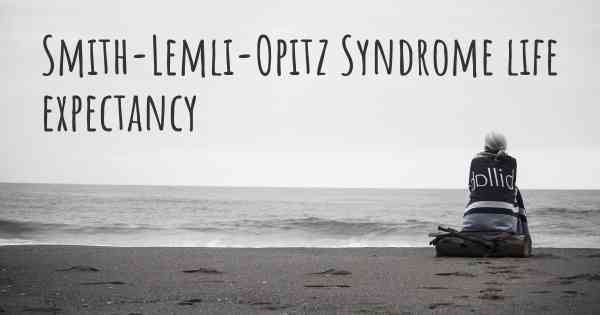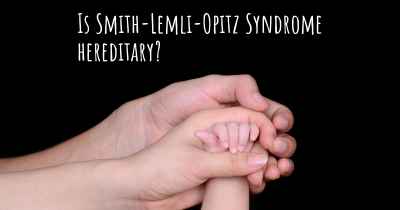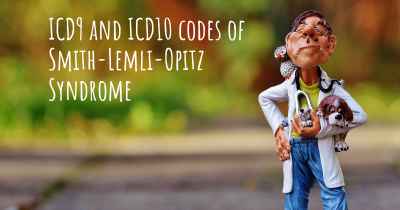What is the life expectancy of someone with Smith-Lemli-Opitz Syndrome?
Life expectancy of people with Smith-Lemli-Opitz Syndrome and recent progresses and researches in Smith-Lemli-Opitz Syndrome

Smith-Lemli-Opitz Syndrome (SLOS) is a rare genetic disorder that affects cholesterol metabolism. The life expectancy of individuals with SLOS can vary depending on the severity of the condition and associated complications. While it is challenging to provide an exact figure, studies suggest that the average life expectancy for individuals with SLOS is around 30 to 40 years. However, it is important to note that some individuals with milder forms of the syndrome may live into adulthood, while those with more severe forms may have a shorter lifespan. Early diagnosis, appropriate medical management, and supportive care can significantly improve the quality of life for individuals with SLOS.
Smith-Lemli-Opitz Syndrome (SLOS) is a rare genetic disorder that affects the body's ability to produce cholesterol. This condition is caused by mutations in the DHCR7 gene, which is responsible for producing an enzyme called 7-dehydrocholesterol reductase. Without this enzyme, the body cannot convert 7-dehydrocholesterol into cholesterol, leading to a deficiency of this essential lipid.
The severity of Smith-Lemli-Opitz Syndrome can vary widely among individuals. The symptoms can range from mild to severe, depending on the specific genetic mutation and the amount of cholesterol produced. Some common features of SLOS include intellectual disability, developmental delays, distinctive facial features, growth abnormalities, and organ malformations.
Due to the wide spectrum of symptoms, it is challenging to predict the exact life expectancy of individuals with Smith-Lemli-Opitz Syndrome. However, it is important to note that SLOS is generally considered a life-limiting condition. The severity of the disorder and associated complications can significantly impact the lifespan of affected individuals.
Medical management and supportive care play a crucial role in improving the quality of life and potentially extending the lifespan of individuals with SLOS. Early diagnosis and intervention are essential to address the specific needs of each patient. A multidisciplinary approach involving various medical specialists, such as geneticists, pediatricians, neurologists, and developmental specialists, is often necessary to provide comprehensive care.
Cardiovascular abnormalities are common in individuals with Smith-Lemli-Opitz Syndrome. These can include congenital heart defects, arrhythmias, and other structural abnormalities. Prompt diagnosis and appropriate management of these cardiac issues are vital to prevent complications that could impact life expectancy.
Respiratory complications can also arise in individuals with SLOS. These may include recurrent respiratory infections, aspiration pneumonia, and breathing difficulties. Close monitoring and proactive management of respiratory health can help minimize the impact of these complications on life expectancy.
Feeding difficulties are frequently observed in individuals with SLOS, which can lead to poor nutrition and growth. Adequate nutritional support, including specialized diets and feeding techniques, may be necessary to ensure optimal growth and development.
Neurological manifestations of Smith-Lemli-Opitz Syndrome can vary widely, ranging from mild intellectual disability to severe cognitive impairment. Seizures, autistic features, and behavioral challenges are also commonly observed. Early intervention, educational support, and therapies tailored to the individual's needs can help optimize cognitive and behavioral outcomes.
Regular monitoring of liver function is crucial in individuals with SLOS, as liver abnormalities are common. Liver dysfunction can lead to complications such as jaundice, hepatomegaly (enlarged liver), and liver failure. Timely intervention and appropriate management can help mitigate the impact on life expectancy.
While it is difficult to provide a specific life expectancy range for individuals with Smith-Lemli-Opitz Syndrome, studies have suggested that the average lifespan is reduced compared to the general population. However, it is important to remember that each case is unique, and the prognosis can vary depending on the severity of the condition and the presence of associated complications.
Research and advancements in the understanding of Smith-Lemli-Opitz Syndrome continue to improve the management and outcomes for affected individuals. Ongoing studies aim to identify potential therapeutic interventions and develop targeted treatments to address the underlying genetic defect.
Supportive care, early intervention, and a comprehensive medical approach are crucial in optimizing the quality of life and potentially extending the lifespan of individuals with Smith-Lemli-Opitz Syndrome. Collaborative efforts between healthcare providers, families, and support networks can help individuals with SLOS thrive and overcome the challenges associated with this rare genetic disorder.
Posted Nov 23, 2017 by Ruth 750








